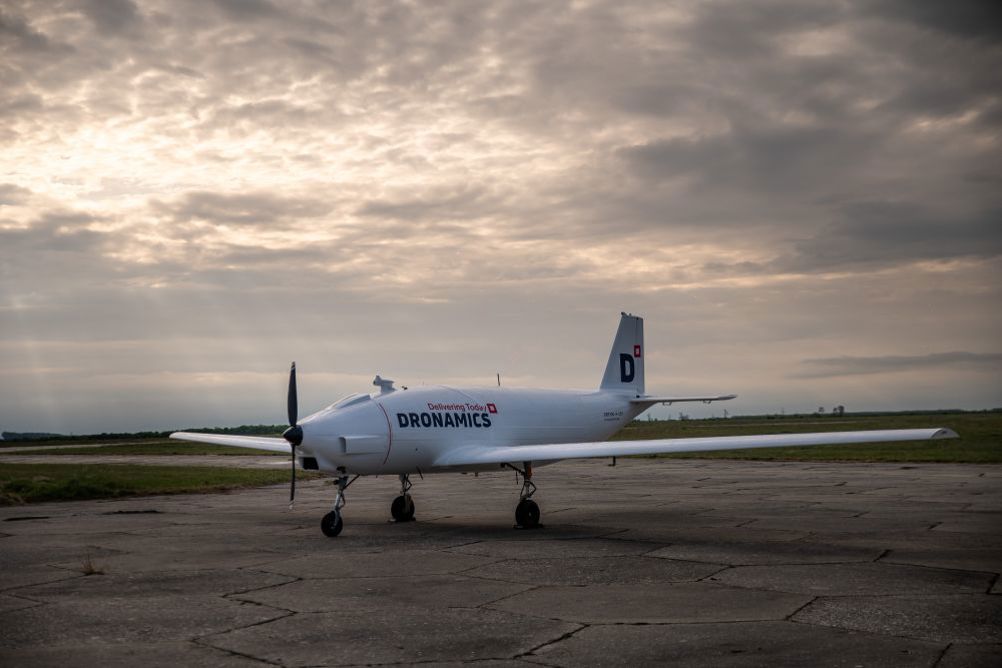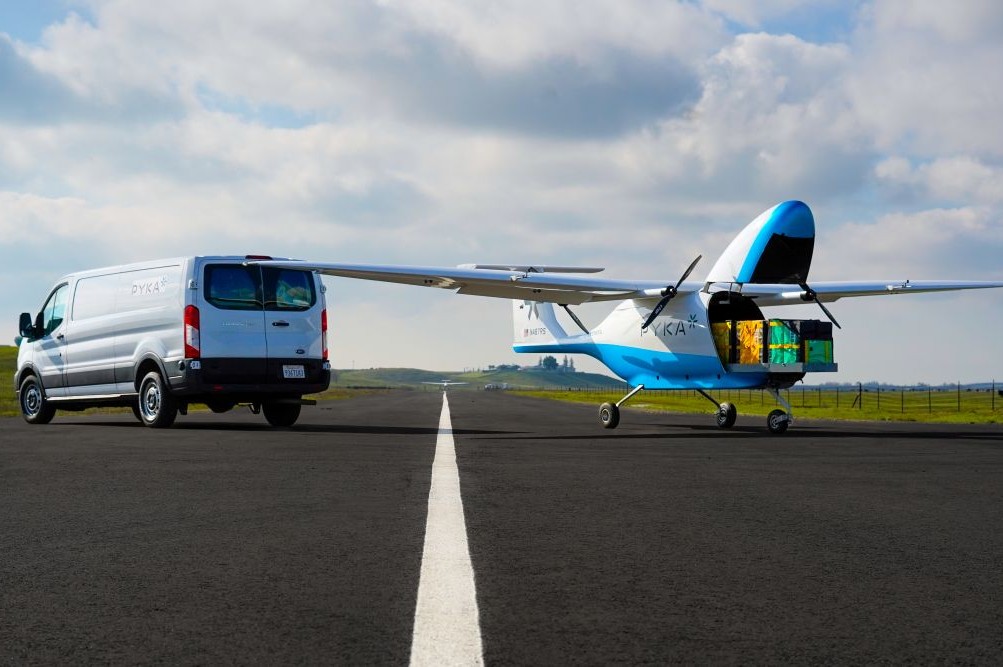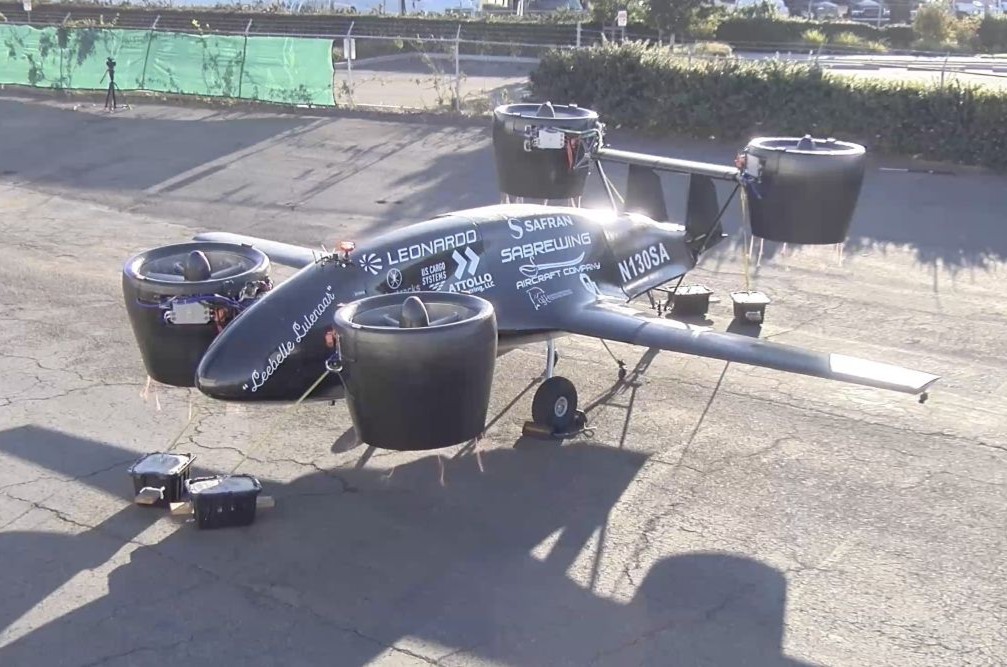
Last year marked 10 years since Jeff Bezos, founder of Amazon, announced last-mile delivery drones.
Since then, many companies have been developing solutions and cargo drones are starting to be used for commercial operations.
Bezos’ announcement in 2013 inspired the team at Dronamics to do something different, according to Co-Founder and CEO Svilen Rangelov.
He says the movement of goods will grow with the global population and customers will expect faster and cheaper delivery.
This needs to be done while balancing environmental concerns.
Dronamics has developed the Black Swan, which can carry 350kg up to 1,550 miles up to 80% faster, 50% cheaper and with 60% lower emissions than alternative modes of transport.
The Black Swan made its maiden flight in May last year at Balchik Airport in Bulgaria, piloted remotely by two commercial airline pilots from a ground control station.
Rangelov says, “What has changed since we first started is the regulatory framework, particularly for large-scale cargo drones like the ones Dronamics develops. This is part of the reason our cargo drone is called the Black Swan, to signify something that people don’t believe can exist until they find out that it does.”
The pandemic was the turning point when people accepted drones, believes Rangelov, who says while people could not travel, goods still had to move both on short- and long-haul routes.
He says, “What is useful is that drone technology allows for the movement of goods to not only continue, but to be faster, cheaper and with lower CO2 emissions. Moreover, the integration of drones deliveries into core industries, including e-commerce, healthcare and humanitarian aid, has highlighted their versatility in real-world applications.”
Most drones focus on last-mile deliveries while Dronamics has created a middle-mile cargo solution which has been modelled on the capacity of a delivery van serving the last mile.
Rangelov says, “Our solution is not a replacement for freighters but rather, a complement for where they cannot reach due to infrastructure or where it doesn’t make sense economically. We will operate from smaller, local airports therefore establishing direct connections that currently don’t exist, benefiting remote and underserved routes specifically, reducing the time and distance travelled by cargo.”
Dronamics is the first cargo drone airline to obtain an operational licence and designator codes from IATA and ICAO, which makes Rangelov and the team proud to be the first to obtain them and it proves that their business model was strong.
Dronamics designs, develops and operates cargo drones, selling the capacity not the aircraft.
Rangelov says drones also show how progressive the air cargo industry can be while maintaining safety standards.
Dronamics has signed strategic partnerships with market leaders such as Hellmann Logistics, Hellenic Post Group, Aramex and Emirates Post Group, which Rangelov says is proof that there is demand for innovative solutions.
“Our interline agreement with the largest cargo carrier by volume, Qatar Airways Cargo, is a testament that the technology we have developed can integrate and complement traditional air cargo for the benefit of businesses and communities all over the globe,” he adds.
Regulations need to be fit for purpose with Dronamics welcoming the European risk-based approach, authorising operations over lower risk areas first.
Rangelov says this combines innovation with safety, which is essential for aviation.
Dronamics is contributing its knowledge and experience through several working groups and organisations including JARUS, Gutma, Flight Safety Foundation International and the EU Future Mobility Taskforce.
People have always looked for innovation and new ways of doing business, with Rangelov saying, “Humans have been trading and moving goods since the beginning of civilisation, first by water and road. But we have only flown for 120 years. Do we think the future is in the skies? Yes, we do!”

Safer transport services
In 2017, Pyka was founded by four entrepreneurs with a vision to make transport safer, cleaner and more cost-effective through autonomous electric aviation, and they took a unique approach, says Chief Commercial Officer Volker Fabian.
To accomplish its mission, Pyka applied its solution to crop dusting, the most dangerous aviation mission.
The team identified market requirements then designed, developed and deployed the first large-scale fixed-wing autonomous electric aerial application UAV with banana growers in Latin America.
Fabian says, “On the back of our commercial and regulatory success in agriculture, we answered the market’s demand for a large-scale 100% electric cargo aircraft capable of heavy-payload and long-range missions.”
Pelican Cargo was officially launched in January 2023 and has been deployed with launch customers in the UK and the USA.
It is the world’s largest fully autonomous and 100% electric cargo aircraft with a 400lb payload and a range of up to 200 miles, and it can operate in areas with minimal ground infrastructure.
Sharing 80% of its design commonality with its agricultural counterpart, the Pelican Spray, Pyka designs and manufactures dozens of proprietary components for both aircraft including the autonomous flight control software, flight computers, high energy density batteries, advanced electric propulsion systems and carbon composite airframes.
Market feedback has been positive with Fabian saying, “We’ve secured launch customers in both defence and commercial logistics and recently delivered the first in a fleet of three aircraft to AFWERX, the innovation arm of the United States Air Force to explore uses for autonomous electric aircraft in contested logistics.”
The target markets for Pyka include defence logistics, inter-island delivery and humanitarian aid supply.
The biggest benefits of cargo drones are decarbonising logistics, connecting remote regions, enhancing express delivery networks and providing safe, fast and reliable cargo transport, says Fabian.
Cargo drones are serious pieces of kit, says Fabian, adding, “Becoming a normal part of the air cargo ecosystem will depend largely on regulatory progress and large-scale commercial adoption.”

Adding capacity
The air cargo market has grown consistently since services started over 100 years ago and is forecast to grow at an average annual rate of around 4% at least for the next 20 years.
This will require capacity, including to remote communities in hard-to-reach locations, says Ed De Reyes, CEO of Sabrewing.
To address this need, Sabrewing has developed the Rhaegal, which can take off and land vertically so has no need for a runway.
It has been designed to make cargo loading easy without requiring special loading equipment and to be easily maintained with no special training, parts or fuel.
De Reyes says, “The Rhaegal series of aircraft can fly higher, faster and farther on 30% less fuel than its closest competitor – with greater payloads than even its crewed competitors. Both aircraft exceed the integrator’s requirement for 6.7lb per cubic foot capacity, and the Rhaegal B can even carry several ULD containers at one time.”
It has a payload of up to 2.5 tonnes over a distance of 1,000 nautical miles with a cruising speed of 200 knots.
The cargo bay can take LD-1, LD-2 or LD-3 containers or bulk cargo using a convertible roller floor.
Sabrewing has received over $2.5 billion of firm orders and production is scheduled to start in the third quarter of this year.
Target customers include regional air cargo carriers, military organisations, government agencies, firefighters and air ambulances.
Commenting on the usefulness of drones, De Reyes says, “The uses of cargo drones are only limited by the imagination of the users. We’ve seen customers plan to use it for many more uses than we imagined when we started the company.”
The regulators remain a challenge with De Reyes saying the Federal Aviation Administration (FAA) lags several years behind the European Aviation Safety Agency (EASA), which has a clear-cut pathway to certification.
“The FAA is still fumbling with inexperienced personnel and lack of commitment to regulations following the B-737 MAX crashes in 2018 and 2019, and now the “door plug” issue. Because of this and the lack of experienced personnel, the FAA is afraid of making any regulation regarding not just Part 25-certificated aircraft, but of any aircraft,” says De Reyes.
Market growth offers huge potential with overnight operators such as FedEx and UPS, as well as companies offering warehouse-to-door products such as Amazon and AliExpress, whose business models built on fast deliveries will expand air cargo to new levels.
De Reyes says, “Many areas of the populated world where markets currently exist but are either not served or not easily served due to their remoteness are areas that have yet to open to air cargo.”
This article was published in the June/July 2024 issue of Air Logistics International, click here to read the digital edition and click here to subscribe.
